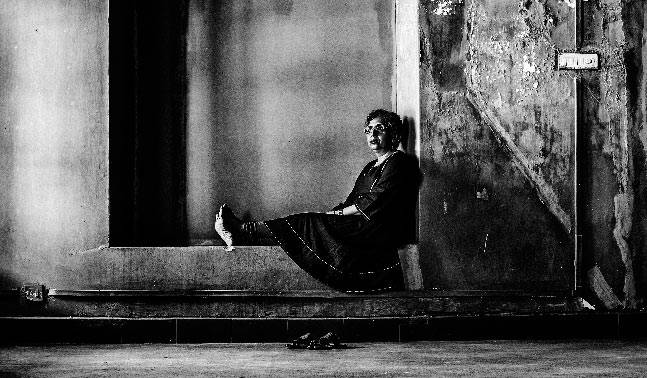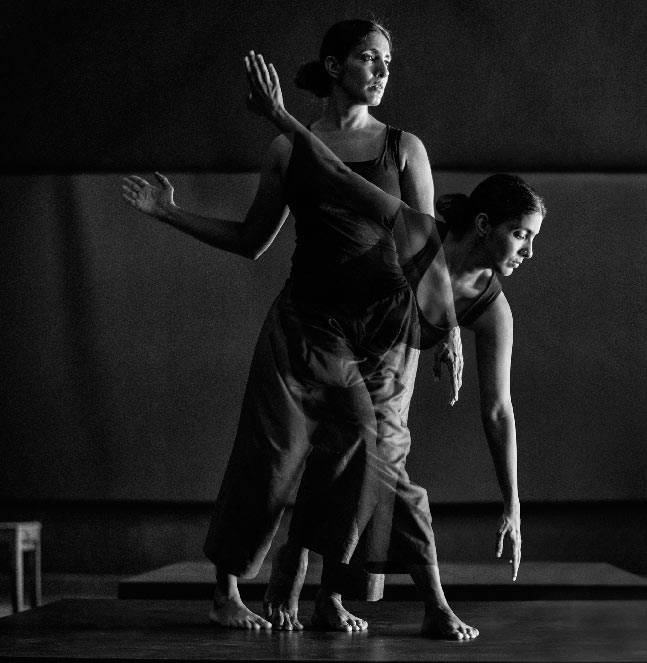Return to loss
Two poets, a dancer and an installation artist challenge the notion of art in the third edition of Kochi-Muziris Biennale.

"...this isn't a dream, this is the sea" - Raul Zurita, For Kurosawa/The Sea
Outside the warehouse at Aspinwall, Kochi, the poet who was born in Santiago, Chile, is untying his shoelaces before stepping into the sea, a tomb to Galip Kurdi, the Kurdish refugee child who drowned in the waters off Turkey. A woman hitches up her dress and asks if the water is dirty. The poet Ral Zurita looks away and walks into the man-made sea. He stands there in the middle exposed, vulnerable and open to interpretations as all poets are. The poem at the end of the make-believe sea, Sea of Pain, is ancient. The poet says it took him 66 years to think about it.
He writes "No one can mimic his final image moored face down at the water's edge. No artist can provide that low blow. Ah, the world of art, the world of images, billions of images. The words of a poem are cleaner, more pure." Zurita studied engineering and became a poet. The It was in response to the coup in Chile in 1973. He saw bodies being dumped in the sea. He wrote verses commemorating the deaths. He offers no answers in a post-truth world. He only offers hope.
If the Sea of Pain could drown us then and there, we'd be released of a million guilts. The poet holds his pen steady. For minutes, the pen rests in his hand. Parkinson's hadn't come in the way. He had once said "My disease feels beautiful to me". In the ephemeral sea, his wife steps in with a camera. Later, he looks at her and smiles and says "love is you." Poet Sharmistha Mohanty's installation is an in-between space, a meeting ground of everything-she works with time and reality and their shifting natures. Yardena Kurulkar returns to the memory of an old wooden cupboard in an installation (she has three at the Kochi-Muziris Biennale) where her Jewish family would keep their sacred texts.
The dance of longing is performed by Padmini Chettur and her group of five who have chosen texts from Anais Nin, Junot Diaz and Jeanette Winterson among others to perform on. The slowness mimics the distance and the longing of the heroine, who doesn't cut a sorry figure but a strong-willed woman who can dare to love another woman or leave a man who betrays. There is a lot of poetry and performance at the Kochi-Muziris Biennale, the third edition of which is on till March 29, 2017. At its helm, artist Sudarshan Shetty has established that art can transcend frontiers of expressions. Through the poet who lives and works in Mumbai, the contemporary dancer from Chennai and the installation artist who finds meaning in a cupboard, he is remaking the old into something vital and vibrant.
Raul Zurita, 66 Poet and artist, Chile Sea of Pain, an installation where Zurita has poured seawater into an old warehouse at Aspinwall at the third edition of Kochi-Muziris Biennale.

Sharmistha Mohanty, 47 Poet and writer, Mumbai Her installation is a convergence of sound, installation and text, a place where forms meet and multiply. It is a room where one can sit for hours looking out at the sea with the words coming at you with the poet's velvety voice reciting, "What you hear is what you hear."

Padmini Chettur, 43 Contemporary dancer, Chennai Her performance Varnam at David Hall for the third edition of the Kochi-Muziris Biennale is ephemeral but one that is haunting as it sets out to explore a new iteration of the heroine who is abandoned by her lover. It is a critique of classical Indian dance. There's eroticism, there's lesbian love and there's the strength of the woman who leaves home after her husband falls in love with another.

Yardena Kurulkar, 42 Artist, Mumbai In 15 frames, a heart dissolves in an art installation called Kenosis, which documents the process of the disintegration and the emotion in the light of decay. In another installation called Taphephobia, a wooden cupboard is covered with fresh flowers. The door is ajar and blue velvet is placed inside. Hundreds of porcelain nails tumble out of the cupboard. The installation seeks to establish that nails can be broken and what is alive is also at the precipice of death.

